UC-led research on promising agricultural practice recently lost federal funding
It almost seems too simple to be true. Silicate rock, during the natural process of breaking down in soil, draws carbon from the air – thus helping to absorb carbon emissions and potentially offsetting climate-change impacts.
University of California researchers and their colleagues are studying how that process can be applied in agricultural fields to boost carbon sequestration, or the collection and transformation of atmospheric carbon dioxide (a greenhouse gas) into solid carbon.
“What we’re trying to evaluate is a process called ‘enhanced rock weathering,’” said Toby O’Geen, a UC Cooperative Extension specialist and soil science professor at UC Davis. “This practice essentially mimics Mother Nature’s process of regulating climate.”
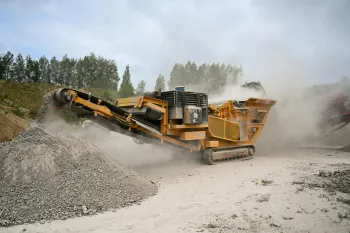
That weathering is “enhanced” because the chemical breakdown is sped up by increasing the reactive surface area of the material, typically by pulverizing rock (often waste products from mining operations) into powder.
For centuries, farmers have been adding rock as an “amendment” to infuse mineral nutrients into the soil. But the carbon capture and sequestration effects of adding pulverized rock dust to fields is a relatively recent innovation and not fully understood.
O’Geen’s research team – comprising scientists from UC Davis Institute of the Environment, Lawrence Livermore National Laboratory and UC Sierra Foothill Research and Extension Center – seeks to glean invaluable data.
“This is a really new practice for agriculture, with not much science behind it,” said O’Geen. “The studies that have been published show that there is a drawdown of carbon from the atmosphere, but they can't necessarily tell us how much carbon we’re removing.”
O’Geen; Isabel Montañez, director of the California Collaborative for Natural Climate Change Solutions (C4NS); and their collaborators have devised a first-of-its-kind study to comprehensively measure the carbon sequestered by this climate-smart agricultural practice.
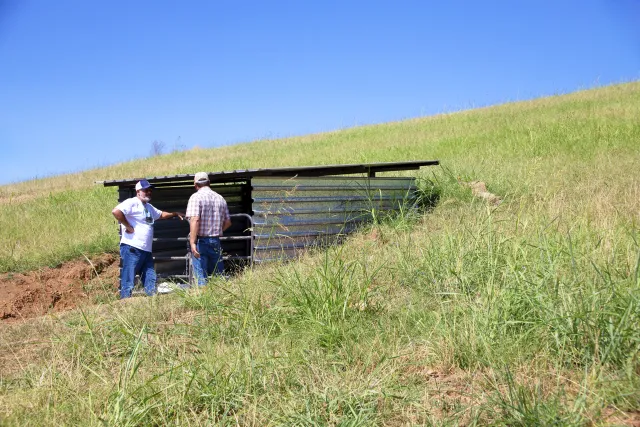
“No other study in the world is doing that, which is essential to be able to incentivize this practice,” O’Geen explained. “If we know how much carbon we take out of the air, we can monetize that – and carbon markets can invest in the practice, and that can support growers and ranchers in implementing the practice in the future at large scale.”
Innovative monitoring system enables scientists to quantify carbon
On irrigated pasture at Sierra Foothill REC – a UC Agriculture and Natural Resources facility in Browns Valley in Yuba County – researchers added pulverized rock dust to several fields. As rain and irrigation water move through the soil, the water collects carbon dioxide from the atmosphere, creating a weak acid.
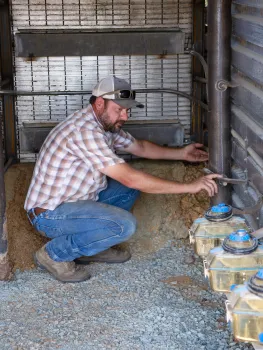
That acid breaks down the rock dust, and the products of that “weathering,” including carbon pulled from the atmosphere, are then captured by the soil and eventually washed into streams and out to the ocean, where it can remain sequestered for thousands of years.
“We need to find mechanisms to draw down the carbon dioxide that’s in the atmosphere and lock it into places where it will not exchange with the atmosphere,” O’Geen said. “And that will hopefully lower global temperatures and reduce climate change.”
To measure the carbon sequestered in this process, O’Geen devised an ingenious series of trenches cut into the slope of the pasture. Inside each dug-out “trench,” metal trays are inserted into the soil layers at various depths; they catch the irrigation water and rainwater that flows down the slope through the soil.
The water then travels through tubes connected to buckets. Once each bucket reaches a certain volume, it tips, and a data logger tallies the number of tips to measure the “flow rate” – the volume of water moving through the soil. Multiplying the flow rate by the concentration of carbon in the water reveals the total mass of the carbon moved from the air to the soil and – ultimately – to streams and waterways.
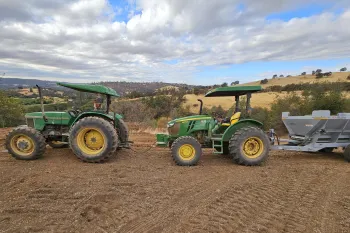
And even though the rock was applied just last year, researchers are reporting initial positive results.
“Obviously rock takes a long time to weather and dissolve fully, but we’re already seeing evidence of atmospheric carbon drawdown in the soil-water solution on landscapes that have been treated with pulverized rock,” O’Geen said.
Sierra Foothill REC facility, staff ingenuity essential to research project
Learning from a similar system used by O’Geen in the early 2000s at Sierra Foothill REC, agricultural supervisor Nikolai Schweitzer and farm maintenance workers Scott Beasley and Michael Williams engineered and constructed this innovative water monitoring network.
“What makes this project so special and unique is that we’re able to leverage the human capital and research infrastructure at SFREC,” O’Geen explained. “We would not be able to do this by ourselves... the people here have the skill set to build the monitoring equipment that we need. Plus, we can place instruments in the field that would be impossible to maintain on a private farm.”
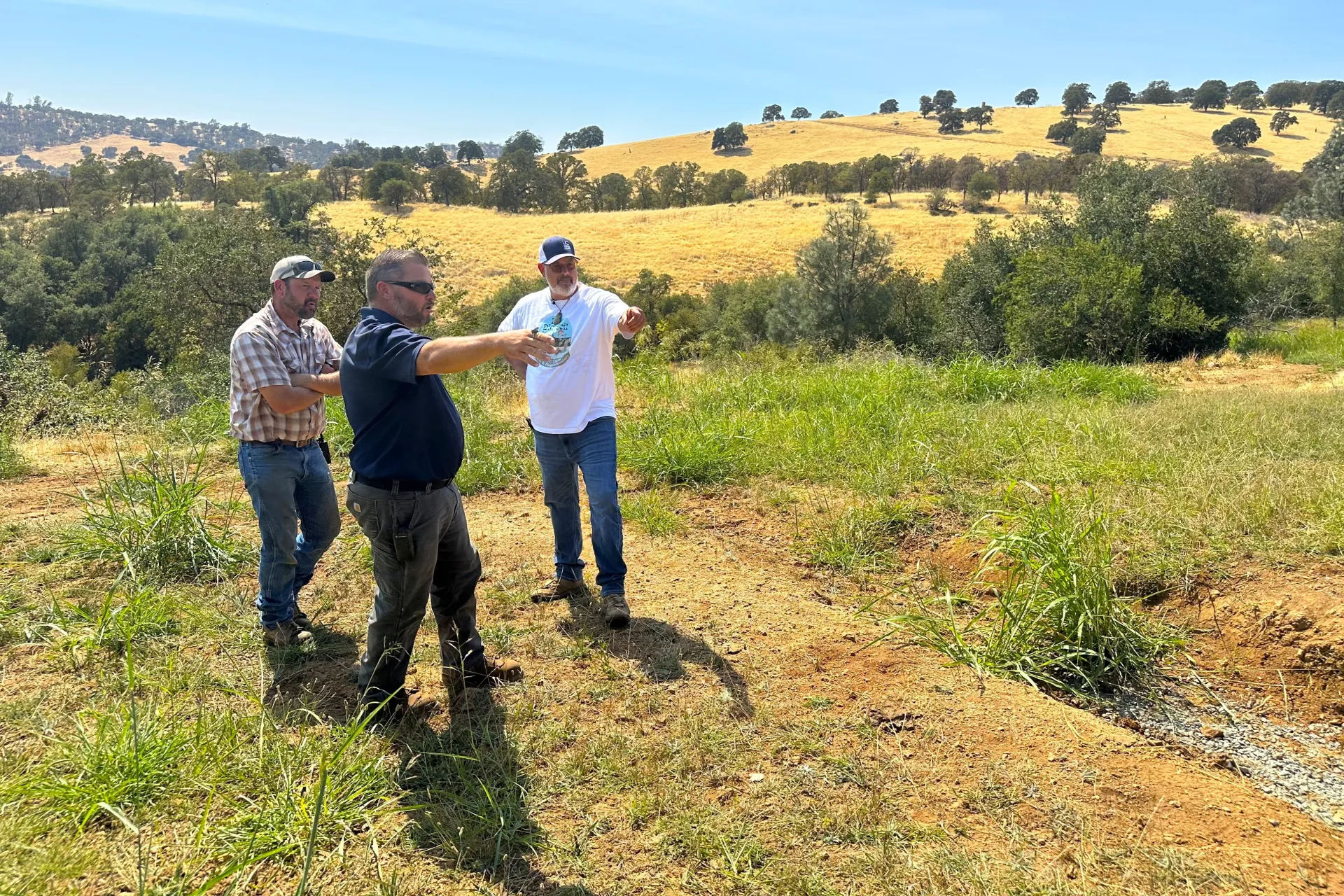
Schweitzer said that the project has produced not only valuable insights on improving irrigated pasture, but also challenged the REC staff to adapt and innovate.
“The research project Toby brought to Sierra Foothill REC has never been implemented before,” he said. “So problem-solving on a consistent basis has provided the SFREC crew an opportunity to sharpen and hone our fabrication, supply-chain and teamwork skills.”
In addition to measuring the mass of carbon sequestered, researchers are also looking at differences between untreated pastures and pastures with the pulverized rock amendment.
Enhanced rock weathering can provide other benefits for growers, such as increasing the pH, and releasing nutrients like magnesium, potassium, calcium silicon and other micronutrients that boost plant growth.
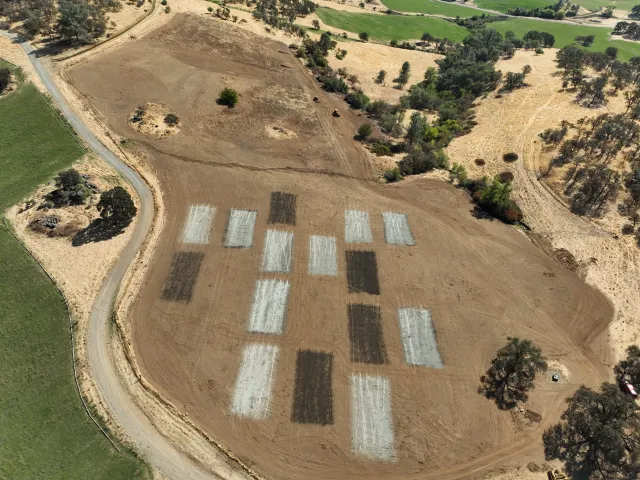
O’Geen said the scientists are interested in how adding pulverized rock can complement other healthy soil practices, such as adding organic residues (compost), or no-till/minimal tilling. Applying compost with the rock dust, for example, might boost microbial activity and accelerate rock weathering.
“What we're hoping to show is that when the practices are combined together, we can get multiple co-benefits, not just carbon sequestration, but also possibly healthier soils at the same time – with greater water holding capacity of soils, better fertility of soils and ideal pH of the soil for growing a crop,” he said.
Only one year into their research project, the scientists were recently informed that they had lost their federal funding. But, O’Geen said, they are committed to continuing this crucial study for at least the next five years.
“We have had donations from several very generous donors, and we’re actively seeking out more grant funding to keep it alive,” O’Geen said. “We have this tremendous infrastructure that we need to continue to invest in and collect the data from.”

